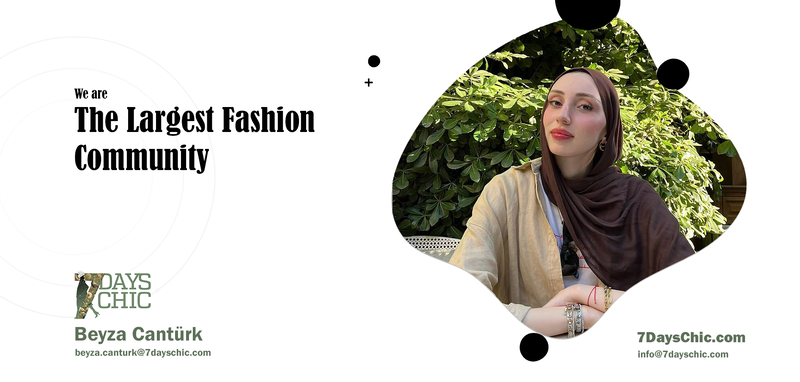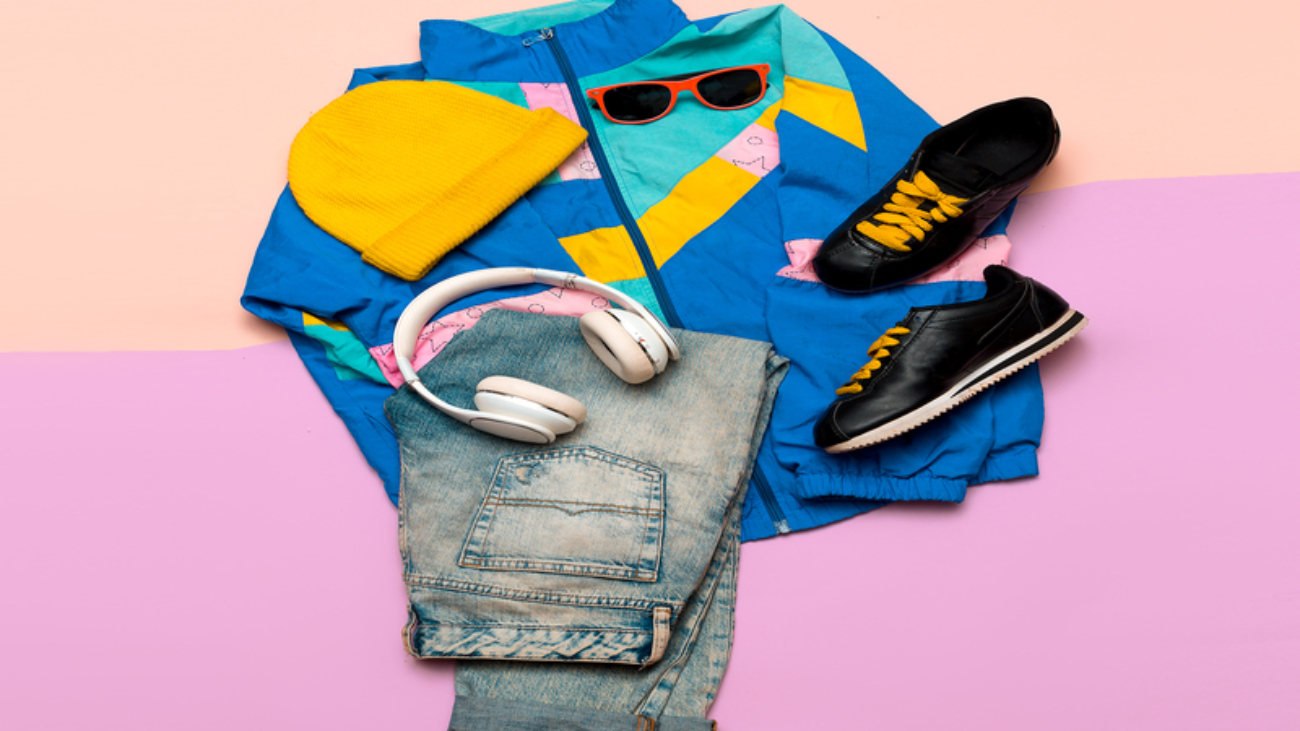How to Mix and Match Items to Maximize Outfit Options
The beauty of a capsule wardrobe lies in its flexibility. Here are strategies to effectively mix and match your selected pieces:
- Layering: Use layering to create depth in your outfits. For example, wear a fitted turtleneck under a dress for added warmth, or layer a cardigan over a basic tee for a chic, casual look.
- Accessorizing: Accessories such as scarves, belts, and statement jewelry can dramatically change the feel of an outfit. A simple outfit can be transformed with the right accessories, making it suitable for various occasions.
- Playing with Proportions: Experiment with different proportions to create balance in your outfits. Pair a fitted blazer with a flowing maxi dress or wear a structured top with relaxed trousers for a contemporary appearance.
- Color Coordination: Sticking to a cohesive color palette makes it easier to mix and match. Neutrals can be combined effortlessly, while a few pops of color can add vibrancy without overwhelming your style.
Example Combinations:
- Casual Day Out: Pair a white shirt with classic jeans, add a denim jacket, and finish the look with comfortable sneakers for a relaxed vibe.
- Office Ready: Wear the same white shirt with tailored trousers, a structured blazer, and loafers to create a professional ensemble.
- Evening Look: Transform the white shirt by layering it under a little black
- dress, adding heels and statement jewelry for a sophisticated outfit.
Final Thoughts on Building a Capsule Wardrobe
Creating a capsule wardrobe is not only about simplifying your clothing choices but also about cultivating a personal style that is both practical and expressive. By focusing on essential pieces that are timeless and versatile, you can maximize your outfit options while minimizing clutter and decision fatigue. This approach fosters a more organized, efficient, and sustainable way of dressing, allowing you to enjoy your style without the stress of an overflowing closet.
Embracing the capsule wardrobe concept can lead to greater self-confidence in your fashion choices, as each piece you own is thoughtfully selected to represent your unique style. By incorporating these strategies and essential items, you can create a wardrobe that serves you well for years to come, adapting to different seasons and occasions with ease.
5. The Role of Accessories in Elevating Style
Accessories play a crucial role in enhancing personal style and transforming any outfit from ordinary to extraordinary. They are the finishing touches that can convey individuality, elevate the overall look, and make a statement without overpowering the main ensemble. In this section, we will explore how jewelry, scarves, belts, and bags can significantly impact an outfit, offer tips for using accessories to express personal style, and discuss how to match accessories to different occasions and moods.
How Jewelry, Scarves, Belts, and Bags Can Transform an Outfit
Accessories have the power to change the entire vibe of an outfit. Here’s how different types of accessories can elevate your style:
- Jewelry: Jewelry is perhaps the most personal form of accessorizing. A statement necklace can draw attention to the neckline, while dangling earrings can frame the face beautifully. For instance, pairing a simple black dress with bold, colorful earrings can create a striking contrast, making the outfit pop.
Delicate layering of necklaces can also add a trendy touch to casual outfits, such as a t-shirt and jeans.
- Scarves: A scarf is a versatile accessory that can add color, texture, and warmth to an outfit. It can be styled in multiple ways, whether worn around the neck, as a headband, or even tied to a handbag. For example, a lightweight silk scarf can elevate a plain white shirt and jeans by adding an element of sophistication. In colder months, a chunky knit scarf can not only keep you warm but also create a cozy and stylish look when paired with a fitted coat.
- Belts: A belt can define the waist and enhance the silhouette of an outfit. It can be used to add shape to loose-fitting garments, such as oversized sweaters or flowy dresses. For instance, cinching a long cardigan with a wide belt can create an hourglass shape while adding visual interest. Additionally, using a bold belt can serve as a focal point in a monochrome outfit, breaking up the color and adding dimension.
- Bags: The choice of bag can influence the entire tone of an outfit. A structured handbag can convey professionalism and polish, making it perfect for office wear. Conversely, a casual crossbody bag is ideal for a relaxed day out. For example, a sleek leather tote can complement a business attire ensemble, while a vibrant clutch can elevate a simple evening dress, adding a touch of personality and flair.
Tips for Using Accessories to Express Personal Style
Accessories are a fantastic way to showcase your personal style and creativity. Here are some tips for effectively sing accessories to reflect your individuality:
- Mix and Match: Don’t be afraid to mix different styles of accessories. Combining vintage and modern pieces can create a unique look that tells a story about your personal taste. For example, wearing a vintage brooch on a modern blazer can add an unexpected twist to a classic outfit.
- Experiment with Colors: Use accessories to introduce color into your outfit. If your clothing is mostly neutral, a bright bag or statement earrings can provide a pop of color and elevate your overall look. For instance, pairing a beige outfit with a vibrant red handbag can create a striking contrast.
- Layering: Layering accessories can create depth and visual interest. For instance, stacking multiple bracelets or rings can give a casual look a more polished finish. Similarly, layering necklaces of varying lengths can add a trendy touch to simple tops or dresses.
- Seasonal Adjustments: Adapt your accessories according to the season. In summer, light and airy fabrics in bright colors work well, while in winter, heavier fabrics with richer tones can add warmth to your outfits. For example, a lightweight floral scarf can enhance a summer dress, while a wool scarf in earthy tones can complement a winter coat.
Matching Accessories to the Occasion and Mood of Your Look
Understanding how to match your accessories to different occasions and moods is essential for achieving a well-coordinated look. Here are some guidelines:
- Casual Outings: For everyday casual wear, opt for simple and functional accessories. A crossbody bag and minimal jewelry, such as stud earrings or a delicate bracelet, can enhance your look without being overly formal. For example, pairing a relaxed t-shirt with distressed jeans and sneakers can be completed with a casual tote and a few layered necklaces.
- Professional Settings: In a professional environment, choose accessories that convey confidence and sophistication. A structured handbag, classic watch, and understated jewelry can enhance your business attire without distracting from your professionalism. For instance, wearing a tailored suit with a leather tote and a simple pendant necklace presents a polished appearance.
- Evening Events: For formal or evening events, accessories can take center stage. This is the time to embrace bold pieces, such as statement earrings or a dramatic clutch. Pairing an elegant gown with eye-catching jewelry can create a stunning look. For instance, a sleek black dress can be elevated with sparkling chandelier earrings and a metallic clutch, making it perfect for a night out.
- Mood-Based Choices: Your mood can also influence your choice of accessories. If you’re feeling playful, opt for quirky, colorful pieces. Conversely, if you’re in a more subdued mood, choose minimalist accessories. For example, a bright, patterned scarf can express a joyful, energetic mood, while a simple silver bracelet might reflect a more reserved day.
In conclusion, accessories are vital in elevating your style and expressing your personality. They offer the flexibility to transform any outfit, allowing individuals to showcase their creativity and adapt to various occasions and moods. By thoughtfully selecting and coordinating jewelry, scarves, belts, and bags, anyone can enhance their overall look and feel more confident in their personal style.
6. The Art of Layering
Layering is an essential technique in fashion that allows individuals to create depth, interest, and versatility in their outfits. Not only does it help adapt to fluctuating weather, but it also provides a canvas for personal expression. In this section, we will delve into effective layering techniques for various seasons, how to mix textures and colors for added visual appeal, and the significant role outerwear plays in elevating any ensemble.
Layering Techniques for Different Seasons
- Fall: As the air turns crisp, fall offers the perfect opportunity to embrace layering. Start with a base layer, such as a lightweight turtleneck or a fitted long-sleeve shirt. For instance, wearing a black turtleneck under a plaid flannel shirt creates a casual yet stylish foundation. Add a medium-weight cardigan or sweater; a chunky knit in a rich autumn hue like burgundy can add warmth and texture. Complete the look with a long trench coat for a sophisticated touch. A well-chosen scarf can not only serve as an accessory but also provide additional warmth. For example, pairing a cream turtleneck with a burnt orange cardigan, high-waisted jeans, and ankle boots creates a cozy, chic autumn aesthetic.
- Winter: When winter arrives, layering becomes a necessity for staying warm while looking fashionable. Begin with a thermal or fitted long-sleeve shirt as your base layer. For example, a white thermal shirt can be paired with a thick, knitted sweater in a neutral shade. The outer laver should consist of a heavy coat, like a puffer or wool overcoat. For instance, layering a fitted black thermal under a chunky knit sweater, topped with a long wool coat, keeps you warm and chic. Accessories like beanies, gloves, and scarves become essential in winter, allowing for added style. A bright scarf can provide a cheerful contrast against a monochromatic outfit, such as a gray coat and black leggings.
- Spring: Spring layering can be tricky due to unpredictable temperatures. Start with a breathable base layer, such as a light cotton t-shirt. For example, a pastel-colored t-shirt can be paired with a lightweight denim jacket, which can be easily taken off if the day warms up. To add depth, consider a flowing kimono or cardigan over the t-shirt. A floral-print kimono can introduce a vibrant touch to a simple outfit, making it perfect for spring outings. Accessories like light scarves can be added for both style and practicality. For instance, a light scarf can be tied around your neck or worn as a headband, enhancing the outfit’s overall appeal.
How to Layer Textures and Colors for Added Depth and Dimension
Effective layering is not just about wearing multiple garments; it’s also about mixing textures and colors to create a dynamic look. Here are some strategies to achieve this:
- Mixing Textures: Combining various materials adds richness to your outfit. For example, layering a soft cashmere sweater with a leather skirt creates a striking contrast between cozy and edgy. A silk blouse layered under a chunky knit cardigan can also provide an appealing texture combination. When layering, think about using fabrics like cotton, wool, denim, and leather to achieve a balanced yet interesting look. For example, pairing a suede jacket with a cotton shirt and denim jeans can create an effortlessly stylish ensemble.
- Color Coordination: When layering, sticking to a cohesive color palette helps maintain harmony. A good approach is to choose a base color and build from there. For instance, if you’re wearing a patterned shirt, select solid layers that pick up on the colors of the pattern. An effective example would be layering a floral print blouse with a solid-colored blazer that complements one of the hues from the floral pattern. This technique ensures that your outfit appears intentional and thoughtfully put together.
- Layering Patterns: Mixing patterns can be done effectively with some guidelines. For instance, a striped shirt can pair well with a floral scarf, provided that the colors in both patterns complement each other. Aim to keep one pattern more dominant and the other subtle to avoid clashing. A practical example would be wearing a polka dot dress under a plaid shirt, creating a playful yet stylish combination. Additionally, incorporating accessories with geometric prints can elevate the entire look, making it feel more modern and chic.
Using Outerwear (e.g., Jackets, Blazers, and Coats) to Enhance Outfits
Outerwear is not only functional but also a vital component in enhancing any layered outfit. Here’s how to effectively utilize outerwear in your styling:
- Jackets: A well-fitted jacket can define the silhouette of your outfit. For example, a structured blazer can be worn over a casual t-shirt and jeans to elevate a laid-back look into something more polished. An olive green utility jacket over a white tee and skinny jeans creates a balanced look that’s perfect for casual outings. Alternatively, a leather jacket can add an edgy touch to feminine outfits, such as a flowy dress, creating a stylish contrast. For instance, wearing a leather biker jacket over a floral dress not only adds warmth but also infuses an element of toughness.
- Blazers: Blazers are incredibly versatile and can be used in both casual and formal settings. For instance, wearing a tailored blazer over a graphic tee, paired with distressed jeans, creates a chic, effortless look for a night out. A fitted blazer in navy paired with matching trousers can create a sophisticated, coordinated ensemble suitable for professional environments. You can also elevate a simple outfit of a plain white tee and black jeans by adding a brightly colored blazer, making it suitable for a business casual setting or a dinner date.
- Coats: In colder weather, the right coat can complete your layered look while keeping you warm. An oversized coat layered over fitted clothes can create an interesting silhouette. For example, a long, tailored coat can be worn over a slim-fitting sweater and leggings, creating a chic yet comfortable outfit perfect for running errands or meeting friends. Alternatively, a trench coat can serve as a classic addition, adding sophistication to any outfit. Layering a trench over a knitted sweater and a midi skirt not only provides warmth but also creates a streamlined look.
In conclusion, mastering the art of layering allows for creativity and functionality in fashion. By utilizing effective layering techniques suited to different seasons, combining various textures and colors, and strategically incorporating outerwear, anyone can enhance their personal style. Layering not only keeps you comfortable and stylish but also gives you the freedom to express your individuality through thoughtful outfit choices. Embrace layering as an essential skill in your fashion repertoire, and watch as it transforms your approach to dressing, making every outfit a canvas for self-expression.
7. Incorporating Patterns and Textures
Incorporating patterns and textures into your outfits can significantly enhance your personal style and elevate your overall look. While it may seem daunting to mix and match different elements, mastering this art can create visually appealing ensembles that express individuality and creativity. This section will explore how to effectively mix patterns without clashing, add texture for visual interest, and balance bold and subtle elements to create harmonious outfits.
How to Mix and Match Patterns Without Clashing
- Understanding Scale: One of the key principles of mixing patterns is to consider the scale of the designs. When pairing two patterns, it’s effective to choose one bold, larger pattern and one smaller, more subtle one. For example, wearing a large floral print blouse with a small polka dot skirt creates a contrast that is visually appealing without overwhelming the outfit. This technique helps maintain a sense of balance while allowing each pattern to stand out in its own right.
- Color Harmony: Ensuring that the colors within your patterns complement each other is crucial for a cohesive look. For instance, if you choose a striped shirt with shades of blue, pairing it with a floral skirt that features similar blue hues will tie the outfit together. Alternatively, you can use a neutral base color, such as white or beige, in one of the patterns to anchor the look. This allows for more freedom in selecting bolder patterns while keeping the overall aesthetic grounded.
- Pattern Types: Mixing different types of patterns, such as geometric and organic, can create an interesting visual dynamic. For example, pairing a geometric print blazer with a floral blouse can provide a chic contrast that adds dimension to your look. However, to prevent clashing, it’s advisable to keep one of the patterns in a more subdued color palette, allowing the other pattern to take center stage.
Tips for Adding Texture to Make Outfits More Visually Appealing
- Layering Textures: Introducing various textures into your outfits enhances depth and interest. For example, pairing a soft cashmere sweater with a textured leather skirt creates a tactile contrast that is visually striking. You can also layer fabrics, such as wearing a fitted cotton turtleneck under a loose, knitted cardigan. This combination not only adds warmth but also creates an appealing contrast between the smooth and chunky textures.
- Accessorizing with Textured Elements: Accessories can serve as an excellent way to incorporate texture into your outfit without overwhelming the overall look. Consider wearing a chunky knitted scarf with a sleek trench coat to add an element of coziness. Similarly, textured handbags or shoes, such as suede or woven materials, can elevate even the simplest outfits. For example, a plain white t-shirt and ieans can be instantly transformed with the addition of a textured handbag or a pair of textured ankle boots.
- Experimenting with Fabric Types: Incorporating different fabric types is a great way to add texture. For instance, mixing silk with denim creates a beautiful contrast that feels elegant yet relaxed. Wearing a silk blouse with distressed denim jeans strikes a balance between formal and casual, making it a versatile choice for various occasions.
Pairing Bold and Subtle Elements to Create Balanced Looks
- Strategic Pairing: Balancing bold and subtle elements is essential for creating a well-rounded outfit. When incorporating a statement piece, such as a vibrant printed dress, consider keeping the rest of your outfit more subdued. For example, if you choose a bright floral dress, you can pair it with neutral-colored accessories and footwear to let the dress take center stage. This approach ensures that your outfit remains cohesive while allowing your bold element to shine.
- Utilizing a Color Palette: Establishing a color palette helps in balancing bold and subtle elements. For instance, if you have a patterned skirt featuring multiple colors, select one of those colors for your top to create a harmonious look. A subtle, solid-colored top can help ground the outfit while allowing the patterned skirt to stand out. This method also works well with accessories; using a bold statement necklace that includes one of the skirt’s colors can tie the outfit together seamlessly.
- Playing with Proportions: Experimenting with proportions is another effective way to balance bold and subtle elements. If you’re wearing a voluminous, patterned top, pair it with tailored, fitted bottoms to create a balanced silhouette. For example, a flow, printed blouse can be complemented by slim-fit trousers, ensuring that the overall look remains flattering and polished. This technique allows the bold pattern to add interest while maintaining a streamlined appearance.
In conclusion, incorporating patterns and textures into your wardrobe can elevate your personal style and create visually engaging outfits. By understanding how to mix and match patterns without clashing, adding texture to enhance visual appeal, and strategically pairing bold and subtle elements, you can achieve a balanced and stylish look. Embrace the versatility of patterns and textures as you experiment with different combinations, and watch as your outfits transform into unique expressions of your individuality. With practice and creativity, you can confidently incorporate these elements into your everyday style.
Continue Reading:
How to Make Your Outfits Better: Elevate Your Daily Style / Part 1
How to Make Your Outfits Better: Elevate Your Daily Style / Part 2
How to Make Your Outfits Better: Elevate Your Daily Style / Part 3
How to Make Your Outfits Better: Elevate Your Daily Style / Part 4
How to Make Your Outfits Better: Elevate Your Daily Style / Part 5
Written by Beyza Cantürk




Add a Comment